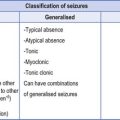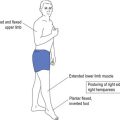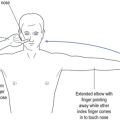12 The neurology of sleep
Introduction
Sleep medicine is often considered the domain of respiratory medicine, rather than neurology. This reflects the fact that Colin Sullivan is credited with recognising the benefits of continuous positive air pressure (CPAP) as an effective treatment for obstructive sleep apnoea (OSA).1 What is less known is that the identification of OSA as a diagnostic entity was consequent to video telemetric evaluation of epilepsy. Nocturnal episodes were seen and appreciated to be breathing-related abnormal behaviour rather than a seizure.2 Until that time, the concept of OSA had not reached the radar screens of those interested in sleep.
Obstruction of the upper respiratory tract, especially in rapid eye movement (REM) sleep, is, more likely than not, the reason why sleep medicine is seen as belonging to pulmonology, especially when one realises the benefits of CPAP. What is largely overlooked is the fact that sleep is a neurological state of being with defined electroencephalographic (EEG) patterns that reflect the stages of sleep emanating from the brain.3 It follows that sleep is an integral part of neurology rather than being of transient interest.
What is Sleep Medicine?
As the name implies, sleep medicine is the study of how sleep affects health or, alternatively, the interface of sleep and health. Sleep medicine is much more than OSA, although OSA represents a very important part of sleep medicine because of its impact on activities such as driving. OSA is a potentially fatal condition because it is associated with an increase in hypertension, stroke and cardiovascular disease.4 Should death occur it is usually attributed to one of these associated conditions, thereby bypassing and camouflaging the serious implications of OSA.
Where to Start?
The patient’s partner is also a great source of diagnostic information, such as the history of loud and intrusive snoring, a restless sleep pattern or gasping for air during the night. The pattern of snoring punctuated by gaps of silence in which nothing is heard, followed by violent sucking in of air to compensate for the lack of oxygen, should provide the doctor with a red flag to suspect OSA.
Sleep is often a neglected and ignored component of medical history that translates into a third of the patient’s life being ignored and taken for granted. The patient’s size might provide the incentive to explore sleep. The Pickwickian obese, middle-aged Caucasian male or the obese, more senior Caucasian female should herald the ringing of warning bells for OSA. It should be appreciated that OSA is associated with a particular habitus5 that is quite different for Caucasians and Occidentals,6 with less emphasis on obesity in Asian people who experience OSA. OSA more frequently occurs in slim Occidental people, rather than the obese, as is the case with Caucasians.
Taking a History
The general practitioner should specifically ask about: the sleep pattern; what time the patient retires; sleep quality; duration of sleep; possible nocturia; insomnia; snoring; time(s) of waking; and comments from sleeping partners. The patient should be asked about how restful or invigorating sleep has been and how energetic they feel the following morning.
Sleep Apnoea
Sleep apnoea may be either OSA or sleep apnoea caused by a central origin, namely a brain-related cause as may occur with a lesion in the brainstem affecting the reticular formation.7 When considering sleep apnoea, most people only consider REM-related OSA, although OSA may occur in non-REM sleep and in some patients non-REM OSA may dominate the pattern.
In REM sleep muscles lose their intrinsic tone, which may cause the respiratory tract to collapse, blocking the upper airways. Once the respiratory pathway has collapsed, air can no longer reach the lungs. As a consequence, oxygen cannot fuel the vital organs, such as the heart and brain—thus the increased risk of myocardial infarction or stroke in patients with OSA.
A heightened awareness of the potential for OSA, particularly in overweight, middle-aged male Caucasians, will prompt the general practitioner to ask about snoring, excessive daytime sleepiness or hypersomnolence. The sleep partner is an invaluable source of history and can describe the apnoeic episodes. There are a variety of features favouring OSA (see Table 12.1).
| Patient appearance |
There is a growing industry of home assessment for OSA that bypasses the sleep physician and, while cheaper, it reinforces the maxim that ‘you get what you pay for!’ There are also oral devices that resist closure of the airways, prepared by dental mould and worn at night. These too take second place to the gold standard of CPAP with proper hospital assessment. With OSA, the role of the general practitioner stops once there is a heightened suspicion of the diagnosis, as this should lead to a referral to an appropriate specialist to confirm the diagnosis and instigate treatment. It recommences once the patient has been provided with appropriate treatment, as general practitioners are vital in maintaining compliance and encouraging patients to persevere with the CPAP.
Insomnia
By far the most common cause for a patient to attend the general practitioner for disturbed sleep is insomnia. The most common cause for insomnia is emotional stress, such as anxiety, depression or worry for whatever reason.8 Often the patient will present complaining of a headache, because society considers it more socially acceptable to have an organic problem rather than openly confess to having difficulty coping. The patient will often present complaining of a migraine, and a good history should exclude migraine as a realistic option with the more common type of headache being tension-type headache (see Ch 6). Once this is diagnosed, the general practitioner can take a more detailed history of potential sleep disturbance.
Should the insomnia be a consequence of stress or altered sleep pattern, from whatever cause, that has resulted in a pattern of inappropriate wakening through the night, it is important to investigate sleep hygiene. The patient should be questioned about timing of going to bed and whether or not they get up through the night for whatever reason. Instituting correct sleep hygiene will often go a long way to correct the insomnia provoked by its disturbance. This may be complemented by the use of hypnotics, such as benzodiazepines in the form of diazepam (Valium®), nitrazepam (Mogadon®) or temazepam (Normison®). Such hypnotics should be taken for three nights in a row to re-establish the body-clock, while at the same time avoiding the potential for habituation and tolerance that attaches to the benzodiazepines. Some patients may complain of a feeling of being ‘hung over’ with the benzodiazepines, in which case zolpidam (Stilnox®) may offer a viable alternative. It must be acknowledged that there have been reports of bizarre nocturnal behaviour associated with Stilnox®, such as binge eating or somnambulism, so the patient needs to be warned.
Somnambulism
Somnambulism (sleepwalking) is one of the parasomnias and is a condition in which the patient may execute very deliberate and, at times, very dangerous activities during sleep.9 It is associated with an abnormality of slow wave sleep rather than REM sleep.
Night Terrors
Night terrors10 are also one of the parasomnias that may be confused and misdiagnosed as epilepsy. They are often very frightening for parents, who feel impotent as they are powerless to stop them and equally powerless to comfort the distressed child.
Night terrors are far more prevalent in children, particularly aged two to six, rather than adults and they are unlike bad dreams. Night terrors are associated with the feeling of apparently unprovoked fear rather than frightening imagery, as may occur in nightmares. More often than not, they occur in non-REM sleep. No specific treatment is available although ensuring that the child has adequate sleep is said by some to be beneficial, but this is debatable. Comfort, reassurance and protecting the distraught child from harm remain the mainstay of any intervention.
Narcolepsy
Narcolepsy11 has its associated tetrad of symptoms including: excessive sleepiness (with the rapid onset of REM sleep); sleep paralysis in which the patient may actually be conscious but cannot move until stimulated by something as innocuous as a light touch; cataplexy with sudden loss of muscle tone which results in collapse that may be provoked by emotional activity (as simple as laughter associated with hearing a joke); and hypnagogic (drifting off to sleep) or hypnopompic (awakening) hallucinations, namely vivid and realistic dreams associated with REM sleep although the patient is sufficiently awake to recall the experience.
An introductory overview such as this, aimed at the non-neurologist, does not lend itself to the discussion of the role of genetics nor the recent finding that narcolepsy is a result of a deficiency in hypocretin, also known as orexin transmission. Orexin enhances wakefulness and inhibits REM sleep, and its deficiency may be measured in a specialised laboratory using the lumbar puncture and cerebral spinal fluid. This is offered merely to whet the appetite of any reader wishing to explore the matter further.12
In the past the mainstay of treatment was the use of stimulants or antidepressants, either tricyclics or serotonin reuptake inhibitors. More recently modafinil (Modavigil®) has become the drug of choice for narcolepsy, as well as for shiftworkers reporting excessive sleepiness. Gamma hydroxybutyrate (often called GHB), widely recognised as the ‘date-rape’ drug, has proven efficacy for cataplexy. Prior to these medications being prescribed, the patient will have been referred to a neurologist or sleep physician so the actual choice of medication will be at their discretion. If the diagnostic tests necessitate referral to a sleep laboratory, it is appropriate to refer the patient once the diagnosis is suspected.
REM Behaviour Disorder (RBD)
Discussion of RBD should probably be beyond the scope of this chapter, but it also is offered to whet the appetite. RBD represents a form of behaviour that occurs in REM sleep in which the patient may act out and even become quite aggressive.13 Sleep partners may describe all manner of strange behaviour provoked by RBD, including being physically attacked by the patient. The patient may vehemently deny it as they will have no recollection of behaving in this manner.
1 Basner M. Continuous positive airway pressure for obstructive sleep apnoea. New England J Medicine. 2007;356:1751-1758.
2 Yantis M, Neatherlin J. Obstructive sleep apnoea in neurological patients. J Neuroscience. 2005;37(3):150-155.
3 Bernard D, Boyd S. Neurophysiological perspective on sleep and its maturation. Developmental Medicine & Child Neurology. 2006;48:773-779.
4 Lanfranchi P, Somers VK. Obstructive sleep apnea and vascular disease. Respiratory Research. 2001;2(6):315-319.
5 Guilleminault C, Abad V. Obstructive sleep apnea syndromes. Medical Clinical of N America. 2004;88:611-630.
6 Batsis JA, Nieto-Martinez RE, Lopez-Jimenez F. Metabolic syndrome: from global epidemiology to individualized medicine. Clinical Pharmacology and Therapeutics. 2007;82:509-524.
7 Autret A, Lucas B, Mondon K, Hommet C, Corsica P, Saudeau D, et al. Sleep and brain lesions: a critical review of the literature and additional new cases. Clinical Neurophysiology. 2001;31:356-375.
8 Lippmann S, Yusufzie K, Nawbary M, Voronovitch L, Matsenko O. Problems with sleep: what should the doctor do? Comprehensive Therapy. 2003;29:18-27.
9 Bornemann M, Mahowald M, Schenck C. Parasomnias: clinical features and forensic implications. Chest. 2006;130:605-610.
10 Derry C, Davey M, Johns M, Kron K, Glencross D, Marini C, et al. Distinguishing sleep disorders from seizures: diagnosing bumps in the night. Archives of Neurology. 2006;63:705-709.
11 Nightingale S, Orgill J, Ebrahim I, de Lacy S, Agrawal S, Williams A. The association between narcolepsy and REM behaviour disorder (RBD). Sleep Medicine. 2005;6:253-258.
12 Ritchie C, Okuro M, Kanbayashi T, Nishino S. Hypocretin ligand deficiency in narcolepsy: recent basic and clinical insights. Current Neurology & Neuroscience Reports. 2010;10(3):180-189.
13 Aurora RN, Zak RS, Maganti RK, Auerbach SH, Casey KR, Chowdhuri S, et al. Best practice guide for the treatment of REM sleep behavior disorder (RBD). J Clinical Sleep Medicine. 2010;6(1):85-95.






